
ELECTRIC TWO WHEELERS IN INDIA
Introduction
Electric two-wheelers are gaining momentum as the future of transportation due to their eco-friendliness, cost-effectiveness, and urban adaptability. At their core, electric two-wheelers are driven by electric motors, replacing traditional internal combustion engines. These motors are powered by rechargeable batteries, a key differentiator that marks them as sustainable transport solutions. They are also known for their remarkable energy efficiency. Maintenance is simplified because they have fewer moving parts compared to internal combustion engines, translating to lower maintenance expenses over time. Furthermore, regenerative braking systems are often integrated, which recapture kinetic energy during braking, enhancing energy efficiency. From a financial perspective, electric two-wheelers offer economic advantages. They typically have lower operating costs than gasoline-powered vehicles due to cheaper electricity compared to gasoline. Governments also incentivize their adoption through tax breaks and subsidies, making them more affordable. In urban environments, their compact size and agility allow them to navigate through congested city streets and find parking with ease. Reduced noise levels from their quiet electric motors contribute to a more peaceful urban atmosphere. Additionally, as cities seek solutions to traffic congestion and parking shortages, electric two-wheelers offer a practical and efficient mode of transportation. Technological advancements have played a pivotal role in the adoption of electric two-wheelers. Improved battery technology has extended their range and reduced charging times. Smart features like GPS navigation and smartphone connectivity enhance the overall riding experience. Governments worldwide are also pushing for electric vehicle adoption through policies and infrastructure development, further solidifying the place of electric two-wheelers in the future of transportation. OTO has partnered with leading electric two-wheeler manufacturers, ensuring you have access to a wide range of high-quality vehicles. Also, OTO has tied up with showrooms of different bike brands to make purchasing easy for you. Our website offers advanced search filters that allow you to refine your search by brand, price, range, features, and other specific criteria, providing you with the flexibility to find the perfect electric two-wheeler to meet your needs. Some of the other benefits include- Affordable financing: OTO offers a variety of affordable financing options for electric two-wheelers, including low down payment loans, longer loan terms, and interest rate discounts. This makes electric two-wheelers more accessible to a wider range of buyers. Flexible repayment plans: OTO offers flexible repayment plans that can be customized to fit the budget of each borrower. This allows borrowers to choose a monthly payment that they can afford. Quick and easy loan application process: OTO's loan application process is quick and easy. You can apply online or through the OTO Capital app . The company also has a dedicated team of customer service representatives who can help borrowers with the application process. Fast loan approval: OTO Capital approves loans quickly, so you can get their electric two-wheelers sooner. This is especially important for people who need a new vehicle right away. Educational resources: OTO Capital provides educational resources through Chatgpt on its website to help consumers learn more about electric two-wheelers and the benefits of owning one. This information can help you make informed decisions about electric two-wheeler ownership. To help futher here is the on-road price of best electric two-wheeler available in India in 2024 -

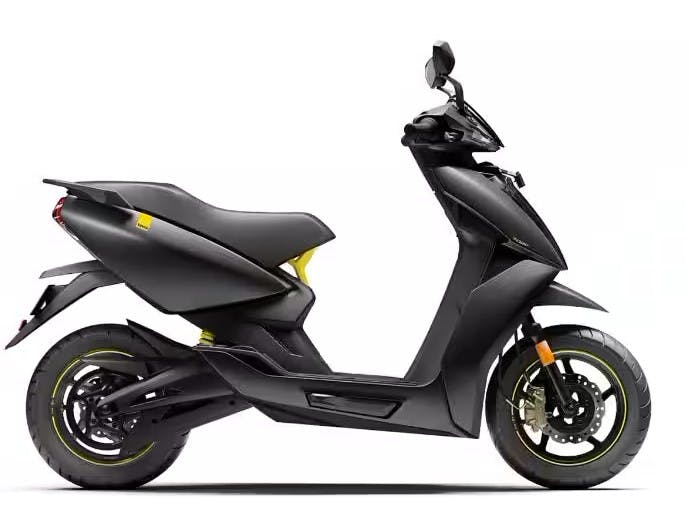
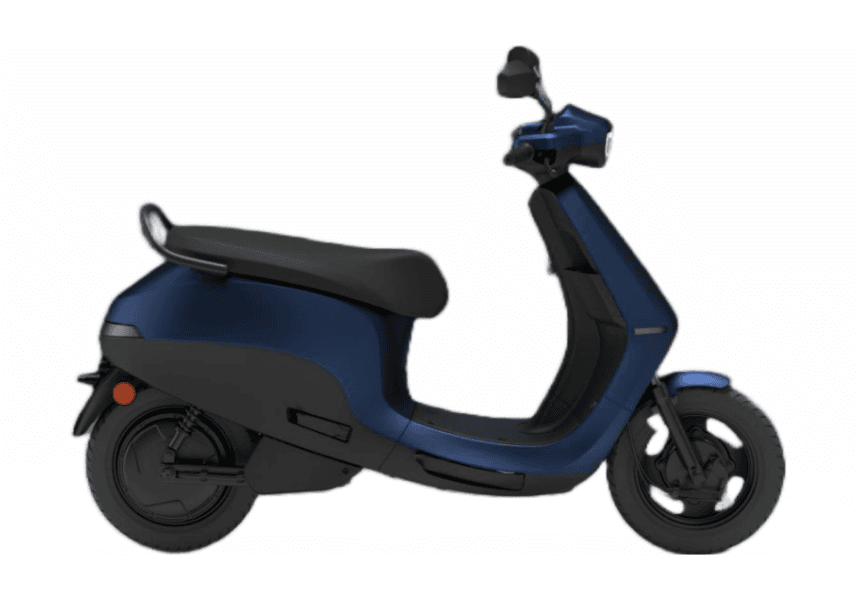
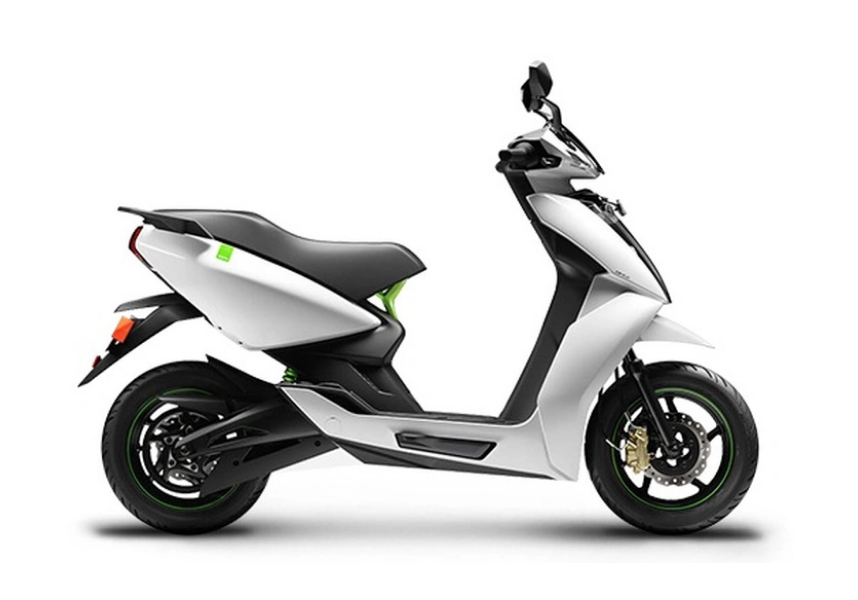
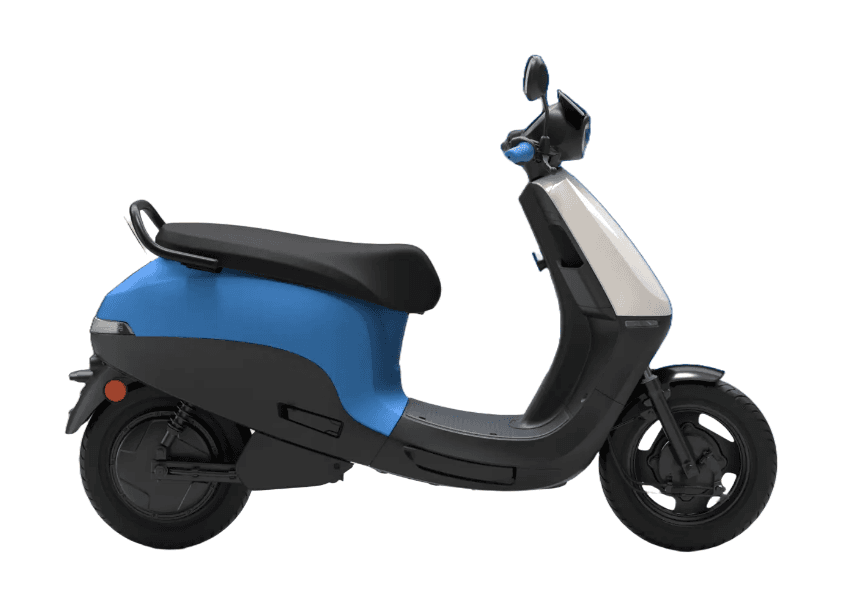
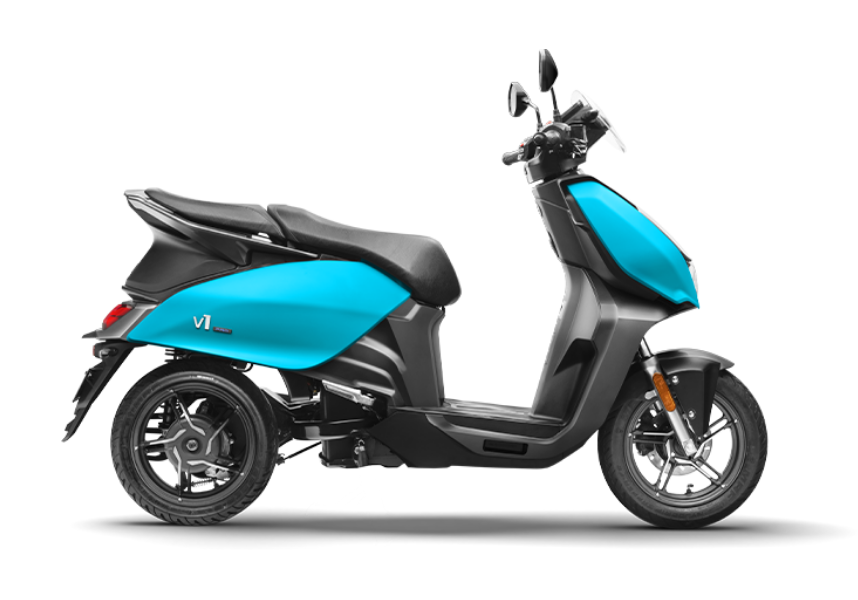


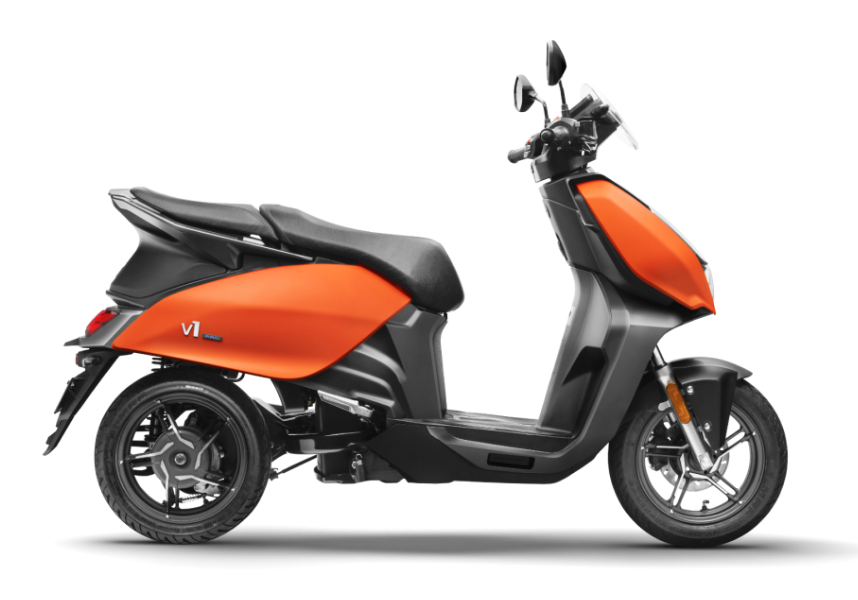





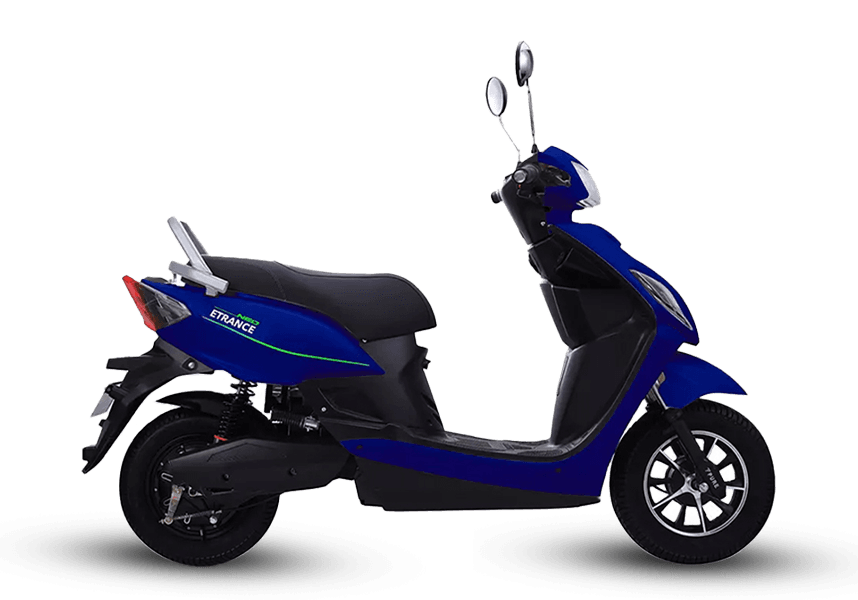

BEST ELECTRIC TWO WHEELERS REVIEWS & RATINGS
Explore the Trending Electric Two Wheelers
FREQUENTLY ASKED QUESTIONS
Here are some key points to consider about an electric two-wheeler: a) Zero emissions: Electric two wheelers do not produce tailpipe emissions, which helps to improve air quality and reduce greenhouse gas emissions. This is particularly important in urban areas, where air pollution is a major concern. b) Lower operating costs: Electricity is a cheaper fuel than gasoline, and electric two-wheelers have fewer moving parts, requiring less maintenance. This can save riders significant amounts of money over the lifetime of the vehicle. Additionally, many governments offer incentives and subsidies for electric vehicles, further reducing their cost. c) Convenience: Electric two-wheelers can be charged at home or at public charging stations. Many electric two-wheelers also have quick charging capabilities, allowing riders to top up their batteries in a short amount of time. d) Advanced features: Electric two-wheelers are constantly evolving, with manufacturers developing new technologies to improve their performance, range, and features. This includes the development of more efficient batteries, faster motors, and advanced electronics. e) Government support: Governments around the world are promoting the adoption of electric vehicles through various policies and initiatives. These include subsidies, tax breaks, and investment in charging infrastructure. This is helping to make electric two-wheelers more affordable and accessible.
The distance an electric two-wheeler can travel on a single charge depends on a number of factors, including: a) Battery capacity: The battery capacity is the amount of energy that the battery can store. The larger the battery capacity, the farther the electric two-wheeler can travel on a single charge. b) Motor power: The motor power is the amount of power that the electric motor can generate. The more powerful the motor, the more energy it will consume. c) Riding conditions: The riding conditions can also affect the range of an electric two-wheeler. Riding uphill, in strong winds, or with a heavy load will consume more energy than riding downhill, with no wind, or with a light load. d) Driving style: Aggressive driving, such as frequent acceleration and braking, will also consume more energy. In general, electric two-wheelers have a range of 50-100 kilometers on a single charge. However, some high-performance models can travel up to 200 kilometers or more on a single charge. Here are some examples of the range of popular electric two-wheelers: a) Ola S1 Pro: 181 km b) Ather 450X: 146 km c) TVS iQube Electric: 75 km d) Okinawa Okhi 90: 160 km e) Hero Electric Nyx: 100 km f) Ampere Magnus Pro: 80 km g) Bounce Infinity E1: 85 km Here are some tips for maximizing the range of an electric two-wheeler: a) Ride smoothly and avoid aggressive driving. b) Avoid riding uphill or in strong winds whenever possible. c) Keep the payload to a minimum. d) Use eco mode or a lower power setting if possible. e) Inflate the tires to the correct pressure. f) Keep the battery well-maintained. By following these tips, you can help to extend the range of your electric two-wheeler and get the most out of a single charge.
The time it takes to charge an electric two-wheeler depends on a number of factors, including: a) Battery capacity: The larger the battery capacity, the longer it will take to charge. b) Charger type: There are two main types of chargers for electric two-wheelers: slow chargers and fast chargers. Slow chargers typically have an output of 1-3 kW, while fast chargers can have an output of 5 kW or more. c) Ambient temperature: The ambient temperature can also affect charging times. Charging in cold weather will take longer than charging in warm weather. d) State of charge (SOC)The SOC is the percentage of charge remaining in the battery. A battery that is completely depleted will take longer to charge than a battery that is partially charged. In general, it takes 4-6 hours to charge an electric two-wheeler using a slow charger. However, some models can be charged in as little as 1 hour using a fast charger. Here are some examples of the charging times of popular electric two-wheelers: a) Ola S1 Pro: 6 hours (slow charger) , 1.5 hours (fast charger) b) Ather 450X: 5 hours (slow charger) , 1.5 hours (fast charger) c) TVS iQube Electric: 5 hours d) Okinawa Okhi 90: 6 hours e) Hero Electric Nyx: 5 hours f) Ampere Magnus Pro: 5 hours g) Bounce Infinity E1: 4-5 hours It is important to note that these are the claimed charging times by the manufacturers. The actual charging time may vary depending on the factors listed above. Here are some tips for charging an electric two-wheeler efficiently: a) Use the correct charger for your electric two-wheeler. b) Charge in a well-ventilated area. c) Avoid charging in direct sunlight or in extreme temperatures. d) Charge your electric two-wheeler regularly. e) Avoid letting the battery completely deplete before charging. f) Keep the battery well-maintained. By following these tips, you can help prolong the life of your electric two-wheeler battery and ensure that it charges efficiently.
Yes, there are several government incentives or subsidies available for purchasing electric two-wheelers. These incentives are designed to promote the adoption of electric vehicles and reduce emissions. The specific incentives available vary depending on the country or state. However, some common incentives include: a) Direct subsidies: The government may offer a direct subsidy on the purchase of an electric two-wheeler. This means that the government will reimburse you a portion of the purchase price. b) Tax breaks: The government may offer tax breaks for the purchase of an electric two-wheeler. This could include a reduction in sales tax, income tax, or property tax. c) Scrapping incentives: The government may offer incentives for scrapping an old gasoline-powered two-wheeler and purchasing an electric two-wheeler. This could include a discount on the purchase of an electric two-wheeler or a cash payment. d) Interest rate subventions: The government may offer interest rate subventions on loans for the purchase of electric two-wheelers. This means that the government will pay part of the interest on your loan, reducing your monthly payments. e) Exemptions from registration fees: The government may exempt electric two-wheelers from registration fees. This can save you hundreds or even thousands of dollars. f) Access to high-occupancy vehicle (HOV) lanes: Electric two-wheelers may be allowed to use HOV lanes, even if there is only one person in the vehicle. This can save you time during rush hour. In addition to government incentives, there may also be incentives available from electric two-wheeler manufacturers or utility companies. For example, some manufacturers offer discounts on electric two-wheelers or extended warranties. Utility companies may offer discounts on electricity rates for electric vehicle owners. Buying an electric two-wheeler can be a great way to save money and reduce your environmental impact. Government incentives can make electric two-wheelers even more affordable. If you are considering buying an electric two-wheeler, I encourage you to research the incentives available in your area.
The lifespan of an electric two-wheeler battery depends on several factors, including: a) Battery type: The type of battery used in an electric two-wheeler will have a significant impact on its lifespan. Lithium-ion batteries are the most common type of battery used in electric two-wheelers and have a lifespan of 3-5 years or 500-1000 charge cycles. b) Battery capacity: The battery capacity is the amount of energy that the battery can store. A larger battery capacity will typically have a longer lifespan. c) Usage patterns: How you use your electric two-wheeler will also affect the lifespan of the battery. Riding in hot weather, riding uphill, or riding with a heavy load can all shorten the lifespan of the battery. d) Charging habits: How you charge your electric two-wheeler will also affect the lifespan of the battery. Overcharging or undercharging the battery can damage it. e) Maintenance: Proper maintenance of the battery can also help to prolong its lifespan. This includes keeping the battery clean, checking the battery terminals for corrosion, and avoiding storing the battery in extreme temperatures.In general, you can expect an electric two-wheeler battery to last for 3-5 years or 500-1000 charge cycles.However, with proper care and maintenance, you may be able to get even more life out of the battery.Here are some tips for prolonging the lifespan of an electric two-wheeler battery: a) Avoid deep discharging the battery. This means not letting the battery completely drain before charging it. b) Avoid overcharging the battery: This means not charging the battery for longer than necessary. c) Avoid exposing the battery to extreme temperatures: Heat and cold can damage the battery. d) Charge the battery regularly: This will help to keep the battery cells balanced. e) Use the correct charger for your electric two-wheeler. f) Keep the battery clean and free of dirt and debris. g) Check the battery terminals for corrosion. h) Store the battery in a cool, dry place: By following these tips, you can help to extend the lifespan of your electric two-wheeler battery. A well-maintained battery will save you money in the long run and reduce your environmental impact.
Yes, electric two-wheelers can be used in rainy or snowy conditions. However, it is important to take some precautions to ensure safe riding in these conditions. Here are a few tips: a) Reduce your speed: Riding in the rain or snow can make it more difficult to control your electric two-wheeler. Reducing your speed will give you more time to react to hazards. b) Be aware of your surroundings: Be aware of other vehicles, pedestrians, and cyclists. Pay attention to the road conditions and watch out for potholes, puddles, and slippery surfaces. c) Use the brakes carefully: Braking too hard in wet or snowy conditions can cause your wheels to lock up. This can make you lose control of your electric two-wheeler. d) Use your headlights: Even during the day, it is important to use your headlights in low-visibility conditions. This will make you more visible to other motorists. e) Wear appropriate clothing: Dress warmly and wear waterproof clothing to protect yourself from the elements. f) Keep your tires properly inflated: Properly inflated tires will provide better traction in wet or snowy conditions. g) Check your brakes regularly: Make sure your brakes are in good working condition and that the brake pads are not worn out. h) Have your electric two-wheeler serviced regularly. Regular maintenance will help to keep your electric two-wheeler in good working condition and prevent problems from developing. Electric two-wheelers are designed to be safe to ride in all weather conditions. However, it is important to take extra precautions when riding in rainy or snowy conditions. By following these tips, you can help to ensure a safe and enjoyable riding experience.
Electric two-wheelers can be as powerful as traditional gasoline-powered motorcycles, and in some cases even more powerful. This is because electric motors have a number of advantages over gasoline engines: a) Instant torque: Electric motors produce instant torque, which means they have maximum power from the moment you start accelerating. This makes them much faster off the line than gasoline engines, which take time to build up revs. b) Flat torque curve: Electric motors also have a flat torque curve, which means they maintain their power throughout the rev range. This makes them feel more powerful than gasoline engines, which tend to lose power at high revs. c) Higher efficiency: Electric motors are more efficient than gasoline engines, which means they convert more of the energy in their fuel into power. This makes them more powerful and energy efficient. d) Simpler design: Electric motors are simpler in design than gasoline engines, which makes them more reliable and easier to maintain. As a result of these advantages, electric two-wheelers can be just as powerful as gasoline-powered motorcycles. In fact, some electric motorcycles are even more powerful than gasoline-powered motorcycles.
The cost of electric two-wheelers varies depending on several factors, including: a) Brand: Some brands of electric two-wheelers are more expensive than others. b) Model: The specific model of the electric two-wheeler will also affect the price. c) Battery capacity: The battery capacity is the amount of energy that the battery can store. A larger battery capacity will typically cost more. e) Country or region: The features of the electric two-wheeler, such as the motor power, brakes, and suspension, will also affect the price. e) Country or region: The price of electric two-wheelers can also vary depending on the country or region where they are sold. The cost of electric two-wheelers is coming down as the technology matures and the market grows. Governments around the world are also offering incentives to promote the adoption of electric vehicles, which is helping to make electric two-wheelers more affordable. Here are some examples of the prices of electric two-wheelers in India: a) Ola S1 X - ₹ 1,17,522 b) Ola S1 Pro - ₹ 1,52,662 c) Vida V1 - ₹ 1,52,257 d) Bajaj Chetak - ₹ 1,60,797 e) Ather 450X - ₹ 1,31,672 f) TVS iQube - ₹ 1,21,006 g) PureEV E Pluto 7G - ₹ 99,100 h) Okinawa Praise Pro - ₹ 1,10,345 i) Ampere Magnus EX - ₹ 1,15,390 ij) Okinawa Okhi 90 - ₹ 1,45,016 k) Bounce Infinity E1 - ₹ 1,19,384 As you can see, the prices of electric two-wheelers range from around ₹ 80,000 to ₹ 1,60,000. The price of a specific electric two-wheeler will depend on the factors listed above. If you are considering buying an electric two-wheeler, it is important to compare prices from different brands and models. You should also consider the features of each electric two-wheeler and make sure that it meets your needs. You may also want to factor in the cost of charging and maintaining the electric two-wheeler. Buying an electric two-wheeler can be a great way to save money and reduce environmental impact.
Yes, electric two-wheelers are safe and are also equipped with several safety features, such as: a) Anti-lock brakes (ABS): ABS prevents the wheels from locking up during braking, which can help to prevent accidents. b) Regenerative braking: Regenerative braking converts the kinetic energy of the vehicle into electrical energy, which is stored in the battery. This helps to extend the range of the vehicle and also provides additional braking power. c) Headlights and taillights: Electric two-wheelers have headlights and taillights that make them visible to other motorists in low-light conditions. d) Reflectors: Electric two-wheelers also have reflectors that make them more visible to other motorists at night. Electric two-wheelers are also subject to the same safety standards as gasoline-powered two-wheelers. This means that they are tested for structural integrity, crashworthiness, and electrical safety. They are a safe and reliable form of transportation. They are a great option for commuters, city riders, and anyone looking for an environmentally friendly way to get around. Here are some tips for staying safe when riding an electric two-wheeler: a) Wear a helmet: A helmet is the most important safety gear you can wear when riding an electric two-wheeler. b) Follow the rules of the road: Obey the speed limit, signal your turns, and yield to pedestrians. c) Be aware of your surroundings: Watch out for other vehicles, pedestrians, and cyclists. d) Ride defensively: Assume that other motorists do not see you. e) Use the brakes carefully: Avoid braking too hard, as this can cause the wheels to lock up. f) Accelerate smoothly: Avoid accelerating too quickly. g) Wear reflective clothing: This will make you more visible to other motorists. h) Use your headlights: This is especially important in low-visibility conditions. i) Maintain your electric two-wheeler properly: This includes checking the brakes, tires, and battery regularly. By following these tips, you can help to ensure that you have a safe and enjoyable riding experience. Electric two-wheelers are a great way to get around, and they are becoming increasingly safe and reliable.
The after-sales services being provided for electric two-wheelers vary depending on the manufacturer and dealer. However, some common after-sales services include: a) Warranty: Electric two-wheelers typically come with a warranty that covers defects in materials and workmanship. The warranty period may vary depending on the manufacturer, but it is typically 1-3 years. b) Free service: Some manufacturers offer free service for a limited time. This may include oil changes, tire rotations, and other basic maintenance tasks. c) Roadside assistance: Many electric two-wheeler manufacturers offer roadside assistance. This means that if your electric two-wheeler breaks down on the side of the road, the manufacturer will send a tow truck to help you get to a service center. d) Spare parts: Electric two-wheeler manufacturers should provide spare parts for their products. This includes batteries, motors, brakes, and other components. e) Service centers: Electric two-wheeler manufacturers should have a network of service centers where customers can get their vehicles repaired and maintained. Service centers should be staffed by trained technicians who have the experience and expertise to work on electric two-wheelers. In addition to these common after-sales services, some manufacturers may also offer additional services, such as: a) Extended warranty: An extended warranty provides coverage beyond the standard warranty period. This can be helpful if you want to protect your electric two-wheeler from unexpected repairs. b) Maintenance plans: A maintenance plan is a prepaid service agreement that covers the cost of regular maintenance tasks, such as oil changes, tire rotations, and brake inspections. c) Mobile service: Some manufacturers offer mobile service, which means that a technician will come to your home or office to service your electric two-wheeler. When choosing an electric two-wheeler, it is important to consider the after-sales services that are offered by the manufacturer. This will help you to ensure that you have access to the services you need to keep your electric two-wheeler in good working condition. You should also ask the dealer about their after-sales service policies. This will help you to understand what services are covered and what the costs are. Kindly note that there will be no after-sales services provided by OTO. IF you need assistance after purchasing a vehicle, please contact the brands customer support team.
Here are some of the best electric two-wheelers on the market: a) Ola S1 Pro: The Ola S1 Pro is a high-performance electric scooter that offers a range of up to 181 km. It has a top speed of 115 km/h and can accelerate from 0-60 km/h in 3 seconds. The Ola S1 Pro also has several innovative features, such as a reverse mode and a hill-hold assist system. b) TVS iQube Electric: The TVS iQube Electric is a premium electric scooter that offers a range of up to 75 km. It has a top speed of 80 km/h and can accelerate from 0-60 km/h in 4.2 seconds. The TVS iQube Electric also has several advanced features, such as a TFT display and a regenerative braking system. c) Ather 450X: The Ather 450X is a stylish and powerful electric scooter that offers a range of up to 146 km. It has a top speed of 89 km/h and can accelerate from 0-60 km/h in 3.3 seconds. The Ather 450X also has several smart features, such as a touchscreen dashboard and a cloud-based connectivity system. d) Okinawa Okhi 90: The Okinawa Okhi 90 is a stylish and affordable electric scooter that offers a range of up to 160 km. It has a top speed of 90 km/h and can accelerate from 0-60 km/h in 4 seconds. The Okinawa Okhi 90 also has a number of useful features, such as a spacious seat and a large under-seat storage compartment. e) Bajaj Chetak Electric: The Bajaj Chetak Electric is a stylish and retro-inspired electric scooter that offers a range of up to 90 km. It has a top speed of 85 km/h and can accelerate from 0-60 km/h in 4.5 seconds. The Bajaj Chetak Electric also has a number of modern features, such as a digital instrument cluster and a regenerative braking system. f) Ampere Magnus Pro: The Ampere Magnus Pro is a powerful electric scooter that offers a range of up to 120 km. It has a top speed of 80 km/h and can accelerate from 0-60 km/h in 4 seconds. The Ampere Magnus Pro also has a number of advanced features, such as a disc brake at the front and a drum brake at the rear. When choosing an electric two-wheeler, it is important to consider the following factors: a) Range: Range refers to the distance an electric two-wheeler can travel on a single charge. It is an important factor to consider based on your commuting needs. If you have a short daily commute, a lower range may be sufficient, but for longer distances, it is advisable to choose a model with a higher range. b) Battery Capacity: The battery capacity determines how much energy the electric two-wheeler can store. A higher battery capacity generally translates to a longer range. It is crucial to consider the battery capacity and choose a model that suits your commuting requirements. c) Charging Time: Charging time is another critical factor to consider. Different models have varying charging times, ranging from a few hours to overnight charging. If you have limited charging facilities or need quick turnaround times, it is essential to choose a model with faster charging capabilities. d) Motor Power: The motor power determines the performance and speed of the electric two-wheeler. Higher motor power provides better acceleration and top speed but may consume more battery energy. Consider your riding preferences and choose a model with an appropriate motor power. e) Weight and Size: The weight and size of the electric two-wheeler play a role in maneuverability and ease of use. Lighter models are generally easier to handle, especially in traffic or while parking. Consider your physical strength and comfort level when choosing the weight and size of the vehicle. f) Build Quality and Durability: It is important to assess the build quality and durability of the electric two-wheeler. Look for models made with high-quality materials that can withstand daily wear and tear. Reading customer reviews and expert opinions can provide insights into the durability of different models. g) Safety Features: Safety should be a top priority when choosing an electric two-wheeler. Look for features such as anti-lock braking systems (ABS), traction control, and stability control. These features enhance safety during riding and reduce the risk of accidents. h) Price: Electric two-wheelers come in a wide price range, so it is crucial to set a budget before making a purchase. Consider the features, specifications, and brand reputation when evaluating the price of a model. Remember to factor in long-term savings on fuel costs and maintenance expenses. i) Warranty and After-Sales Service: Check the warranty period offered by the manufacturer and the availability of after-sales service centers in your area. A reliable warranty and accessible service centers ensure peace of mind and prompt assistance in case of any issues.

